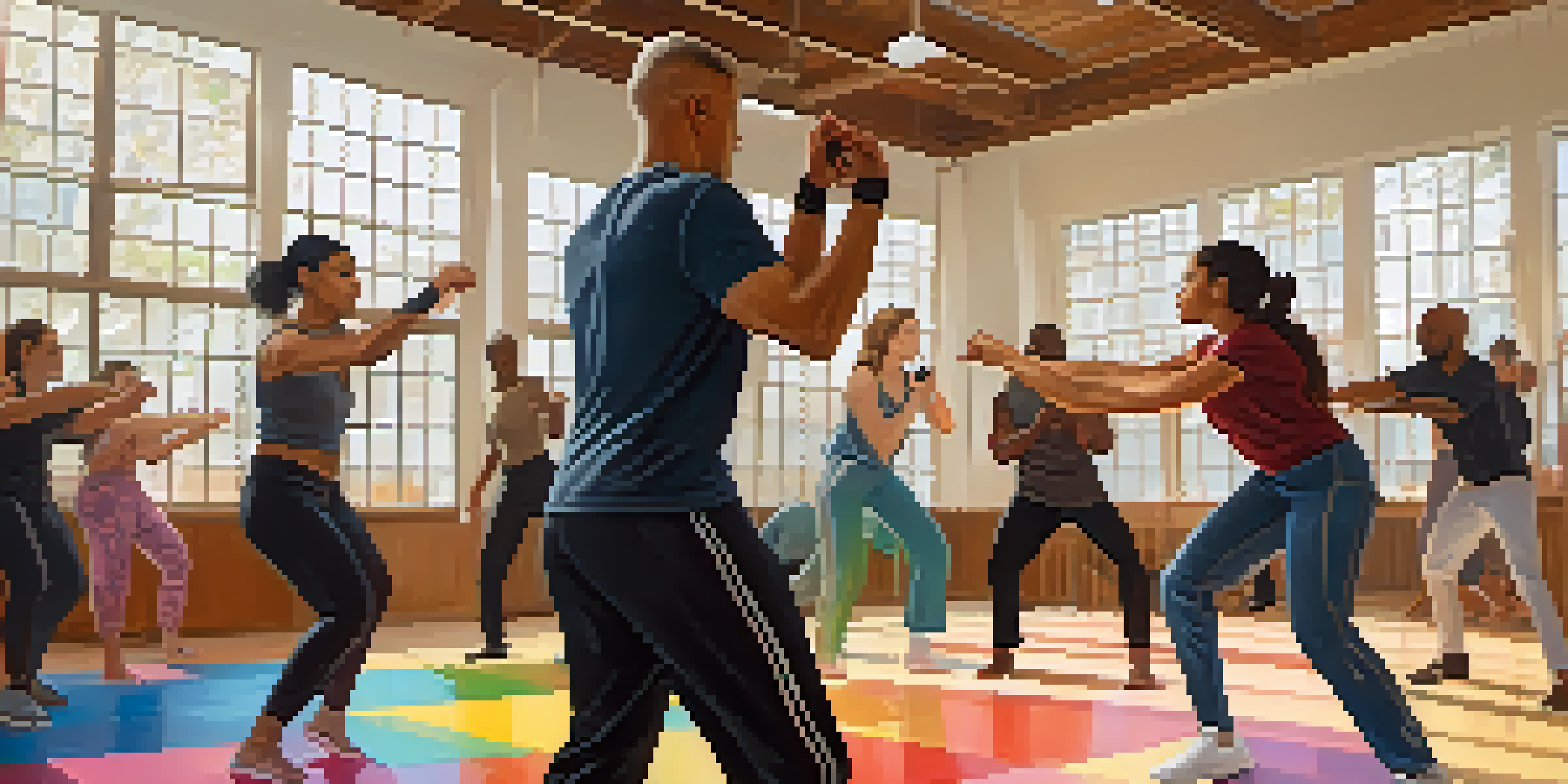Top Self Defense Techniques for LGBTQ+ Safety Empowerment

Understanding the Importance of Self-Defense for LGBTQ+ Individuals
Self-defense is not just about physical safety; it’s about empowerment. For many in the LGBTQ+ community, feeling safe in their environment is paramount, especially in a world where discrimination can lead to violence. Understanding self-defense techniques can help individuals feel more confident and prepared to handle potentially dangerous situations.
Self-defense is not just a skill, it's a state of mind. It empowers you to face the world with confidence.
Empowerment through self-defense can also foster a sense of community. When individuals learn together, they build bonds and share experiences that can enhance their confidence. This collective learning creates a supportive environment where everyone feels safer and more capable.
Moreover, self-defense can serve as a proactive measure rather than a reactive one. By equipping oneself with the right skills, individuals can reduce fear and anxiety, knowing they’re prepared to protect themselves if necessary.
Basic Awareness: The First Step of Self-Defense
Before any physical techniques come into play, situational awareness is crucial. Being aware of your surroundings can help you identify potential threats before they escalate. This means staying alert, noticing exits, and being conscious of people around you.

Using your intuition is an essential part of awareness. If something feels off, trust that feeling and take action, whether it’s crossing the street or finding a more populated area. Your instincts can often guide you better than the most complex techniques.
Self-Defense Empowers the LGBTQ+ Community
Understanding self-defense techniques helps individuals feel more confident and safer in potentially dangerous situations.
Regularly practicing awareness can make it second nature. Try making a habit of scanning your environment and assessing situations, which can significantly enhance your personal safety.
Verbal Self-Defense: The Power of Words
Verbal self-defense involves using your voice to assert boundaries and de-escalate situations. It’s about confidently communicating that you will not tolerate harassment or aggression. This can often deter a potential aggressor without any physical confrontation.
The best defense is a good offense, but sometimes the best offense is simply walking away.
Practicing assertive communication can help build confidence. Role-playing different scenarios with friends can be a fun way to prepare for real-life situations. Think of it as rehearsing your lines in a play; the more you practice, the more natural it will feel.
Remember, it’s okay to shout for help if you feel threatened. Drawing attention to a situation can often dissuade someone from continuing their aggressive behavior.
Physical Techniques: Basic Moves Everyone Should Know
While verbal techniques are essential, knowing basic physical self-defense moves is equally important. Techniques like blocking an attack or escaping a wrist grab can be incredibly effective. Simple moves can empower individuals to react swiftly when needed.
Consider taking a self-defense class specifically designed for the LGBTQ+ community. These classes often focus on real-life scenarios and teach techniques that are easy to remember and execute. Plus, they create a supportive learning environment.
Awareness is Key to Personal Safety
Being aware of your surroundings and trusting your instincts can help identify threats before they escalate.
Practicing these techniques regularly can make a significant difference. Just like learning to ride a bike, the more you practice, the more instinctive your responses will become in a real situation.
Using Everyday Objects for Self-Defense
Many everyday items can be utilized for self-defense in a pinch. Think about carrying a keychain, pen, or even a small flashlight that can be used to fend off an attacker. These objects can provide an unexpected advantage when needed.
It’s all about being creative and resourceful in a situation. Imagine using your phone not just for emergencies but also as a tool to distract or disorient an aggressor. This approach allows you to feel equipped without needing to carry specialized weapons.
Always remember, self-defense is about using what you have on hand. The key is to remain calm and think quickly about how to use your surroundings to your advantage.
De-escalation Techniques for Conflict Resolution
Not every confrontation needs to escalate into a physical altercation. Learning de-escalation techniques can be a powerful tool for diffusing potentially dangerous situations. This can involve calm communication, maintaining a non-threatening posture, and creating space.
Empathy can play a significant role in de-escalation. Sometimes, simply acknowledging another person’s feelings can help ease tension. It’s about finding common ground and steering the situation away from conflict.
Community Safety Plans Foster Support
Collaborating with friends and community members to create safety plans enhances security and builds collective responsibility.
Practicing these skills can be as vital as physical techniques. Engaging in group workshops or role-playing scenarios can help you learn the nuances of de-escalation effectively.
Creating a Safety Plan with Your Community
Building a safety plan with friends or community members can be incredibly empowering. Discussing potential risks and strategies for different scenarios fosters a sense of security and collective responsibility. You’re not alone in this journey.
Consider organizing regular meet-ups to practice self-defense techniques together. This not only sharpens your skills but also strengthens community bonds. Plus, it’s a great opportunity to socialize and share experiences.

Remember, your safety is a community effort. The more you collaborate with others, the stronger and more prepared everyone will feel.